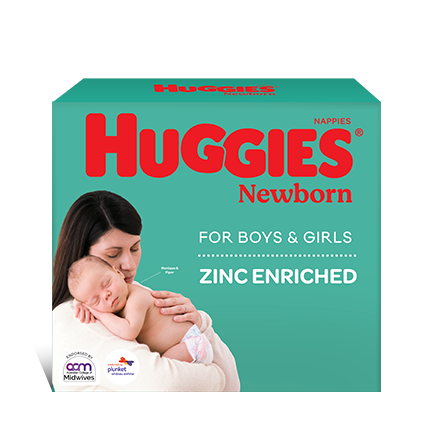Congratulations, you’re with child (or, at least, your partner is) and you’re measuring things in trimesters now. Confusingly, for at least half of the first trimester of pregnancy (which covers weeks 1-13, or the first three calendar months), many women may be unaware they’re pregnant. Don’t worry if they’ve not abstained from soft cheese, tinned fish, a glass of merlot, or trampolining, ahead of finding out.
The risks are low of any harm being done. You, on the other hand, have may feel you’ve wandered into a minefield. You’re about to kick a dozen figurative landmines every week, and most of them will scatter your component parts across the WW2 Western Front of bewilderment that is your life now. But getting through this side-by-side may actually bring you closer together – and steel you for the (joyful!) months and years ahead.
Here’s a rough guide. Tread lightly.
How is mum feeling in the first trimester?
By the end of the first trimester most women have had their pregnancy confirmed. If you’ve had the fated blue line pop on a pharmacy test, but not had a GP or midwife tick that box officially, make an appointment to do so. Here are some common pregnancy signs:
- Bittersweet mammaries. An expecting mum’s breasts can change reasonably early on, including with swelling, increased tenderness, tingling, extra sensitivity and a darkening of the areola (the skin around her nipple).
- She’s always weeing. An increase in the volume of blood in her system, plus her uterus placing pressure on her bladder, means she’ll likely feel the urge to pee much more often.
- All the hangover, none of the drinking. She may be feeling wrung out, and exhausted, and want to sleep a lot; some mums-to-be also feel dizzy or light-headed because of the changes in their blood sugar levels. Then there’s the unwelcome combo of morning sickness (which wouldn’t be as bad if it were only in the morning), which can produce debilitating nausea even well past the three-month mark.
- She’s tetchy. She’s mainlining hormones right now, and her body is changing in sometimes uncomfortable ways, and it can feel like a long road ahead, even with a much-anticipated and enthusiastically desired baby. Tears and/or anger can sideswipe her (and, therefore, you) unexpectedly. Try to stay calm.
- She can be scared. It’s normal to feel anxious about the possibility of miscarriage, which most commonly occurs in the first trimester. Most women feel they can relax a little more as they progress to their second trimester.
How does a woman’s body change in the first trimester?
- At twelve weeks her uterus will be starting to lift out of her pelvis and a small bump may be visible in her lower tummy. Usually only she can notice this This usually won’t be obvious to others—even Sherlock Holmes-ian mothers and mothers-in-law—as at this stage the foetus only weighs about 18 grams. Second-time mums can show a little sooner.
- Good news for some - her breasts may increase a lot in the first trimester, and new bras in a larger size will be helpful.
Detailed week-by-week changes in the first trimester
The first trimester is 13 weeks of incremental change, but even so, some developments will seem to appear out of nowhere. Here’s a guide.
2 Weeks Pregnant
Conception usually happens in the fallopian tube, which is more of a regional side-street to downtown Wombsville, and although it’s obviously a crucial moment, it won’t make the city papers. In short, there will be no outward signs that fertilisation has happened. It generally takes around 6-12 days for the fertilised egg to travel down the fallopian tube to the uterus.
3 Weeks Pregnant
The fertilised egg arrives at the uterus and nestles into the thick lining. As this happens, her body will automatically produce more oestrogen and progesterone, hormones that help sustain the baby throughout the pregnancy. Some women will have a small bleed as the embryo implants into the uterine lining; this is totally cool and normal.
4 Weeks Pregnant
The placenta has started to form by now, even though the embryo is smaller than a grain of rice. The placenta is a remarkable organ—her body grows a new one for each baby, then discards it—and it play a vital role in producing specific hormones and feeding the baby.
5 Weeks Pregnant
An ultrasound tech may be able to detect a heart beat, and the eyes and ears of the embryo are forming. Small buds of tissue start appearing on each side, which will eventually become the limbs. Cool.
6 Weeks Pregnant
If she hasn’t already done a pregnancy test, now’s the time to do one! At six weeks the baby can officially be measured, even if it remains a cluster of cells tinier than a jelly bean. From the crown to the rump and average 6-week-old embryo is just 5-6mm long.
7 Weeks Pregnant
Halfway! Er, through the first trimester. Your baby has grown to about 10,000 times bigger than it was when it was conceived by the sexy union of sperm and egg. Much of the growth is concentrated on their brain this week, with around 100 new brain cells forming every minute. Although don’t get too excited just yet, Einstein’s Dad—an average adult brain has around 86 billion neurons. There’s a long way to go.
8 Weeks Pregnant
It’s officially a foetus! Congratulations. At around a centimetre long, the growing pink pre-baby can now be called a foetus. The valves in the baby's heart have formed, as have the passages which will help air flow from their throat to their lungs. Its fingers, toes, lips, eyelids and legs are becoming more clearly defined.
9 Weeks Pregnant
Fingers and features. The foetus’s mouth and tongue are starting to form, and its hands, which were previously webbed, like a platypus, start to separate into fingers. On an ultrasound, the foetus can be seen making jerking movements, like a tiny Peter Garrett.
10 Weeks Pregnant
The foetal heat is dividing into four chambers, and it can be heard beating with an ultrasound Doppler. All of the baby's body organs have developed, and while their brain is still freakishly large by comparison, the digestive system is developing.
11 Weeks Pregnant
Genitals have formed, but it could still go either way. It's still too early to tell whether you will be having a boy or a girl – their genitals will continue to develop – but their tooth buds are also forming, and the eyes are fully developed. Fine hair covers the body and its facial features have turned a corner: it’s now more clearly sporting the face of a human baby, not an alien.
12 Weeks Pregnant
Time to stretch. The foetus has fully formed all of its vital organs and nervous system pathways. Previously soft bones have begun to harden, and the foetus is less curled up than it was and starts to straighten.
13 Weeks Pregnant
Sayonara, first trimester. Your baby is as cute as a peach (or, at least, the size of one), and their abdominal organs, which had been freakishly forming outside their skin, are about to start moving back to where they’ll end up.
Edited by Ben Smithurst. Jan 2023. Ben is a father of two, dad blogger, and journalist from Sydney. You can find more of his work at directadvicefordads.com.au.
Reviewed by Jane Barry, midwife and child health nurse on 10/02/2023


Last Published* May, 2024
*Please note that the published date may not be the same as the date that the content was created and that information above may have changed since.























